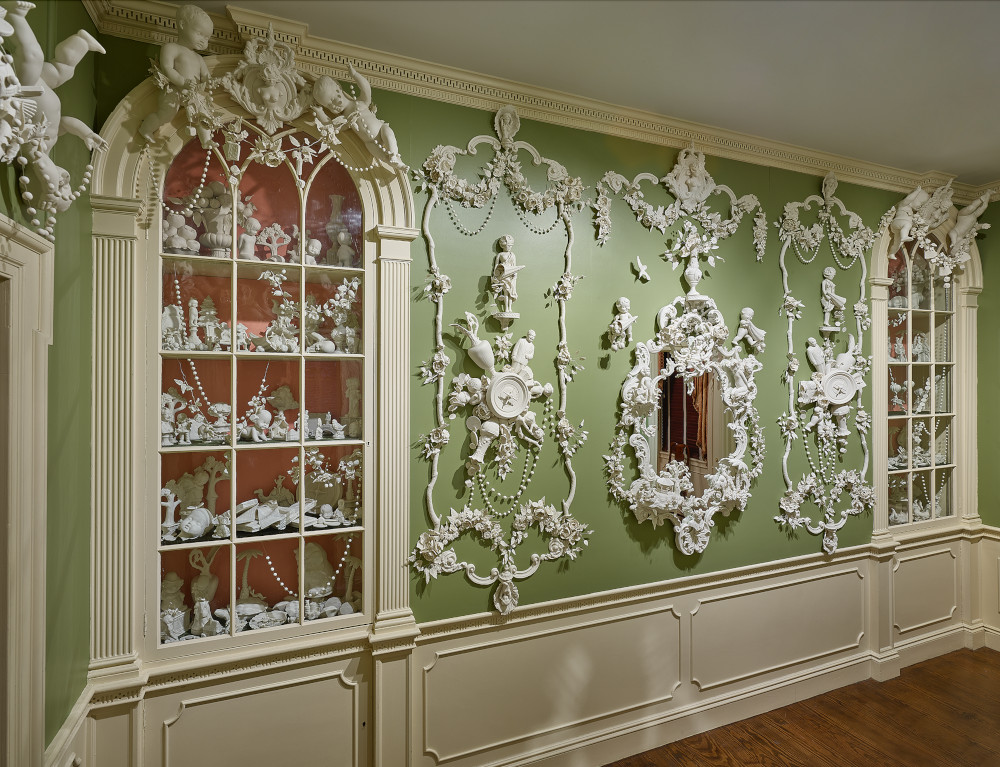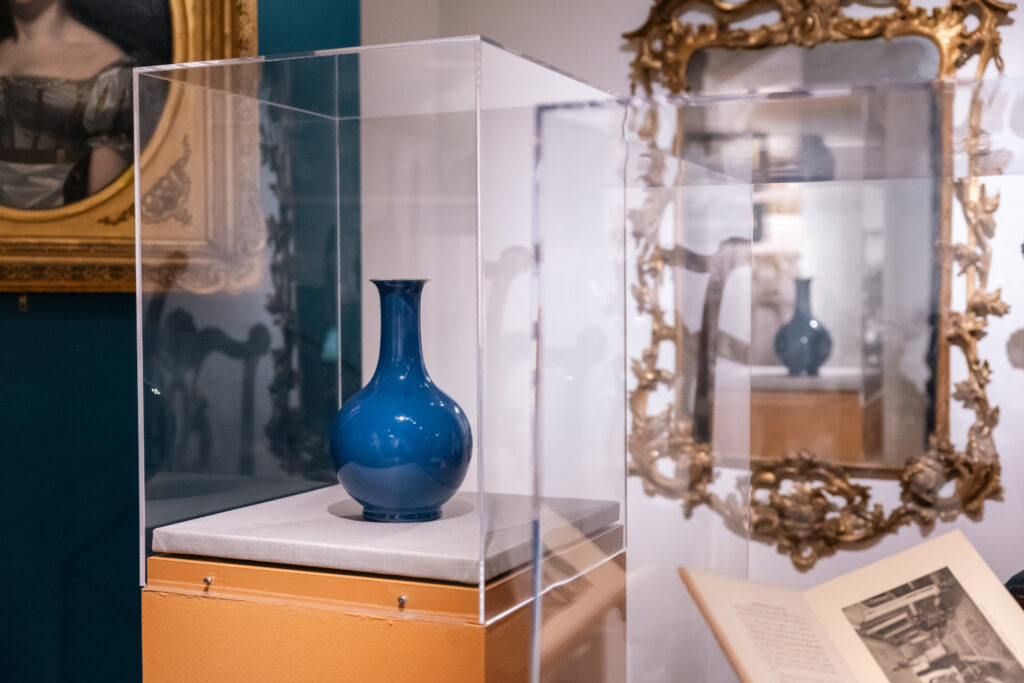 Eustis Estate
Eustis Estate
Pendleton House

At the end of his life, antiques dealer Charles Leonard Pendleton (1846-1904) bequeathed his valuable collection of eighteenth-century furniture to the Rhode Island School of Design, stipulating that its museum must replicate his Federal-era home as a stand-alone wing and preserve its interior arrangements. Opened in 1906, Pendleton House was “furnished as the home of a gentleman of means and taste one hundred and fifty years ago.” With this oft-repeated phrase the museum replaced its problematic donor with a spotless eighteenth-century avatar. A high-stakes gambler, recluse, and purveyor of sometimes dubious antiques, Pendleton did not even own the house the museum had reproduced. His greatest gamble – to erase his disreputable past with an ersatz “gentleman’s home” — paid off. Few today connect the man with his collection.
Beth Katleman’s Games of Chance (2019)

Beth Katleman’s Games of Chance (2019) installation at Pendleton House suggested the grandeur and conspicuous display of an eighteenth-century pleasure pavilion, while also recalling the dizzying scale of Charles Pendleton’s china collection. Yet as she admonished visitors in her introductory wall text, “The world is still deceived with ornament.” The “still” in this Shakespearian quote suggested a link between Pendleton’s deceptions—whether as a dealer or donor—and Katleman’s own, for nothing in Games of Chance was it seemed.
Presenting visitors with an invented origin story for her installation, Katleman’s poker-faced wall text explained the accidental “discovery” of the room’s contents, even directing visitors to a video tour of the Games of Chance room hosted by members of a bogus group called the Antiquarian Research Society (ARS). Suggesting discoveries of another sort, the wall text concluded: “The Games of Chance room may hold the key to the inner life of one of the most misunderstood geniuses of the antiquarian world.”
Using cast human bones as decorative elements, Katleman nodded to the elaborate, decorative ossuaries of Rome’s Capuchin Crypt while also conjuring the vision of a looted treasure-tomb. As if to illustrate Jean Baudrillard’s declaration that the collection resolves the “irreversibility… of the relentless passage from birth to death,” Katleman presented in harmony the sensuality of accumulation and the austerity of the grave.

